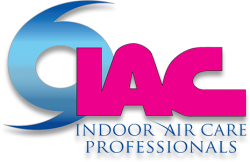Long Island Mold Inspection and Removal

Long Island Commercial and Residential Air Quality Testing
While mold spores are a common component of household and workplace dust, abnormally high quantities of mold spores can present a health hazard to humans. Even if not visible to the untrained eye, mold may be present in your home or business and may harm your health – so if you’re suspecting anything, you should do mold testing of your home…
Health problems associated with high levels of airborne mold spores include allergic reactions, asthma episodes, irritation of the eyes, nose and throat, sinus congestion, and other respiratory problems. Residents of Long Island and Hamptons homes with mold are at an elevated risk for both respiratory infections and bronchitis. If inhaled by an immune-compromised individual, some mold spores may begin to grow on living tissue and cause further problems, and air quality testing is required to discover whether there’s danger from mold.
Mold air testing:
- Assessment of the affected areas
- Sampling one air sample of the outdoor area- control sample
- Sampling each individual suspected area
- Submitting the samples to our lab in order to analyze and compare the
- control sample and the suspected areas samples
- Detailed lab report and information on your property’s mold condition
Mold swab/tape testing:
- Assessment of the affected areas
- Sampling each individual suspected surface
- Submitting the samples to our lab in order to analyze the mold
- Detailed lab report and information on your property’s mold condition
Mold, Mildew, and Air Quality Inspections for Long Island Commercial and Residential Properties
A mold inspection is a comprehensive visual inspection of your property. An IAC-Indoor Air Care certified inspector will examine all areas of your property with various tools to look for both visible mold and sources of moisture. Following the visual inspection, we will test the suspect areas, if needed, to determine whether it is affected with mold spores or growth. Please remember that it is normal to find some amount of airborne mold during a mold testing; a full diagnosis of the sample will determine whether mold levels are acceptable or a potential hazard.
- A written plan of action or suggested course of action
- A diagnosis of the mold source
- Laboratory analysis of samples, if needed
